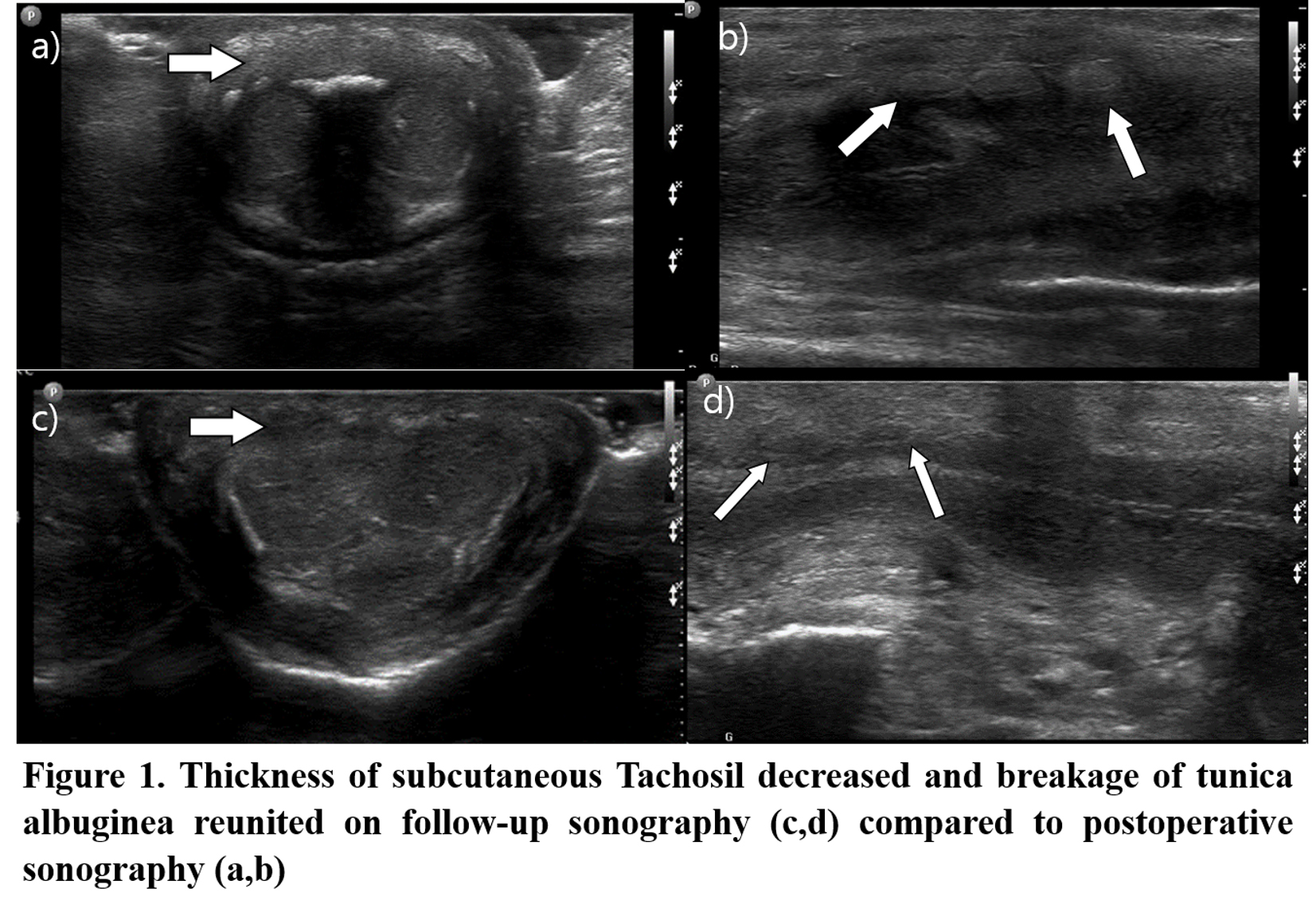Back
Poster, Podium & Video Sessions
Podium
PD23: Sexual Function/Dysfunction: Peyronie's Disease
PD23-08: Postoperative progress of modified grid incision and sealing with Collagen Fleece for treatment of Peyronie's disease; clinical and ultrasonography outcome
Saturday, May 14, 2022
10:40 AM – 10:50 AM
Location: Room 255
Sun Tae Ahn*, Sun Bum Cho, Hyun Soo Lee, Da Eun Han, Jong Wook Kim, Mi Mi Oh, Hong Seok Park, Du Geon Moon, Seoul, Korea, Republic of
- SA
Suntae Ahn, MD
Korea university, Department of urology
Podium Presenter(s)
Introduction: Recently, there have been reports on partial plaque excision and grafting with collagen fleece technique regarding long term efficacy. However, there is still concern regarding complete regeneration of tunical defect from collagen fleece in terms of regenerative medicine. Previously, we introduced a less invasive modified technique by multiple grid incisions of Peyronie’s plaque to minimize weakness of regenerated tunica from the collagen fleece graft. Therefore, this study aimed to evaluate the effects of our modified technique through a prospective follow-up study including ultrasonography.
Methods: From Aug 2018, 31 patients with stable Peyronie’s disease were included. Surgical technique was composed 3 major steps; 1) dissection of the neurovascular bundle or urethra according to the location of plaque, 2) multiple deep grid plaque incisions for complete correction of curvature and deformity and 3) sealing with collagen fleece without suturing. Prospectively, we assessed the stretched penile length, totally straightness, penile sono, erectile function preoperatively and 6, 12, 24, 36 months postoperatively.
Results: Mean patient age was 58.5 years (range: 46–75). The mean curvature was 45.95 (15-90) degrees, 8 with hinge and 7with hourglass deformity. Inflatable penile prosthesis(IPP) was inserted in 4 patients and postoperative 30 months in a patient for poor erectile function. Mean follow-up was 15 months (6-36). Daily massage softened the hard thickening of penis gradually from 3 months until 2 year. On follow-up sonography, subcutaneous thickening gradually decreased to near normal at 1 year and the breakage of tunica by grid incision reunited at postoperative 10-12 months (Figure 1.). All patients achieved totally straightness. Minor skin problem was occurred in 3 patients of IPP. Subcutaneous bulging hematoma was occurred in 2 patients but subsided within 3 months. In postoperative erectile function of 27 patients without IPP, spontaneous hard erection was recovered in 10 and the rest are satisfied with PED5 inhibitors.
Conclusions: Our prospective progress reports with technical modification of various plaque incisions shows that one can achieve a sufficient surgical effect without making defect of tunica albuginea.
Source of Funding: none

Methods: From Aug 2018, 31 patients with stable Peyronie’s disease were included. Surgical technique was composed 3 major steps; 1) dissection of the neurovascular bundle or urethra according to the location of plaque, 2) multiple deep grid plaque incisions for complete correction of curvature and deformity and 3) sealing with collagen fleece without suturing. Prospectively, we assessed the stretched penile length, totally straightness, penile sono, erectile function preoperatively and 6, 12, 24, 36 months postoperatively.
Results: Mean patient age was 58.5 years (range: 46–75). The mean curvature was 45.95 (15-90) degrees, 8 with hinge and 7with hourglass deformity. Inflatable penile prosthesis(IPP) was inserted in 4 patients and postoperative 30 months in a patient for poor erectile function. Mean follow-up was 15 months (6-36). Daily massage softened the hard thickening of penis gradually from 3 months until 2 year. On follow-up sonography, subcutaneous thickening gradually decreased to near normal at 1 year and the breakage of tunica by grid incision reunited at postoperative 10-12 months (Figure 1.). All patients achieved totally straightness. Minor skin problem was occurred in 3 patients of IPP. Subcutaneous bulging hematoma was occurred in 2 patients but subsided within 3 months. In postoperative erectile function of 27 patients without IPP, spontaneous hard erection was recovered in 10 and the rest are satisfied with PED5 inhibitors.
Conclusions: Our prospective progress reports with technical modification of various plaque incisions shows that one can achieve a sufficient surgical effect without making defect of tunica albuginea.
Source of Funding: none


.jpg)
.jpg)